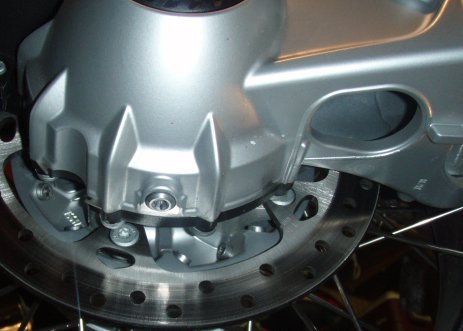TGA57589
New member
R1200rt 2007
I just bought a 2007 R1200RT on the delivery date I asked the service rep if he knew of any problems the new bikes had. I specifically asked him about the final drive and he said they think it is resolved although with German engineering the backlash was was not enough in manufacture. I now have my 600 miles on my bike and they had asked to see it for it's once over and yes they change the final drive oil which being a mechanic tells me they must be looking for metal in the oil although depending on how low the drain is you won't see it anyway and as for the oild be used up so to speak that won't be the story either. I pretty much don't have a problem with changing my final oil with a motor oil change if need be because let's face it $7-8 bucks for oil is'nt going to break me since I've chosen a Beemer anyway. By the way I traded a R1100RT '96 on this new bike for no other reason than I liked the new whistles and bells of an '07. When I test rode a the GT and the RT I knew I would end up buying just for the way the brakes worked and how smooth it shifted. I'm 6'3" and I can sit and touch my feet well but I bet guys a little shorter are having a fit and even I had to get bar backs to give my old back a break. This is my 2nd RT having ridden Honda for some time and even a lapse of no bikes but I ride everyday now and often wonder how I got away for that lapse. I have never riden the bike of the large group although I have riden a couple Victory's and obviously I bought a new RT so I guess that say's something. I been an MOA for about 3 yrs. now and just look around here and thank all who post such good information.
I just bought a 2007 R1200RT on the delivery date I asked the service rep if he knew of any problems the new bikes had. I specifically asked him about the final drive and he said they think it is resolved although with German engineering the backlash was was not enough in manufacture. I now have my 600 miles on my bike and they had asked to see it for it's once over and yes they change the final drive oil which being a mechanic tells me they must be looking for metal in the oil although depending on how low the drain is you won't see it anyway and as for the oild be used up so to speak that won't be the story either. I pretty much don't have a problem with changing my final oil with a motor oil change if need be because let's face it $7-8 bucks for oil is'nt going to break me since I've chosen a Beemer anyway. By the way I traded a R1100RT '96 on this new bike for no other reason than I liked the new whistles and bells of an '07. When I test rode a the GT and the RT I knew I would end up buying just for the way the brakes worked and how smooth it shifted. I'm 6'3" and I can sit and touch my feet well but I bet guys a little shorter are having a fit and even I had to get bar backs to give my old back a break. This is my 2nd RT having ridden Honda for some time and even a lapse of no bikes but I ride everyday now and often wonder how I got away for that lapse. I have never riden the bike of the large group although I have riden a couple Victory's and obviously I bought a new RT so I guess that say's something. I been an MOA for about 3 yrs. now and just look around here and thank all who post such good information.



